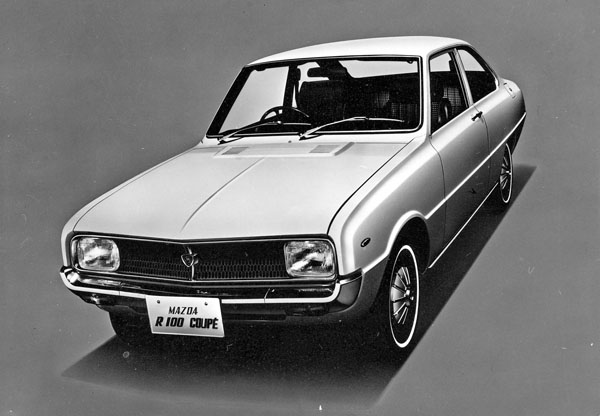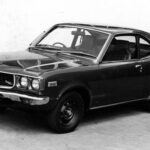In the late 1960s Mazda launched onto the Australian market the R100 Coupé (known in Japan as the Familia) which was the first standard passenger car to be equipped with a rotary engine.
Felix Wankel patented his rotary device in 1933 but it was more than 30 years later that a rotary-engined production car hit the market. More than 2000 rotary engine designs have been patented but the Wankel has so far been the only one to be successfully mass-produced. The two-rotor rotary engine had its low speed performance improved over that of the experimental models without any sacrifice to its high-speed performance and the engine could be driven continuously at 180 km/h and could cover the standing quarter mile in 17.8 seconds.
Apart from its quick performance provided by the rotary engine, the R100 had other virtues. It was superbly built and finished, in a style that Australian buyers had come to expect from Japanese cars.
The interior had a very upmarket feel. Black was the fashion colour of the late 1960s, when it came to interiors and the Mazda designers had conformed happily to that trend. By any standards, the dashboard was impressive and even heading into the 1990s, the style and arrangement of the gauges was difficult to fault. The matching speedo and tacho were suitably dominant in the manner of a traditional English sports car.
The three-spoked woodrim wheel was another nice touch and a standard radio with an electric aerial wasn’t to be taken for granted in 1969. There was a very effective heater/demister with a three-speed fan, headrests on the front seats and a plush carpet of top quality.
Ride in this small car – it was only 3830 mm long and a very narrow 1480 mm width – was quite reasonable although there was a tendency to bounciness over choppy surfaces and the body developed quite a roll. The stumpy body was susceptible to buffeting in a crosswind and the slack at the straight-ahead position made the car unpleasant to drive fast under such conditions. Braking was better with discs up front and drums on the rear. The lack of a servo unit meant that pedal pressures were high and the brakes had a tendency to lock.
Fuel consumption had been claimed by some to be a strong point of the Wankel engine. In fact the reverse was true. Road testers summed the car up at the time as ‘excellent performance, superb engine with heavy fuel consumption; handling and roadholding fair; finish and trim good’.












